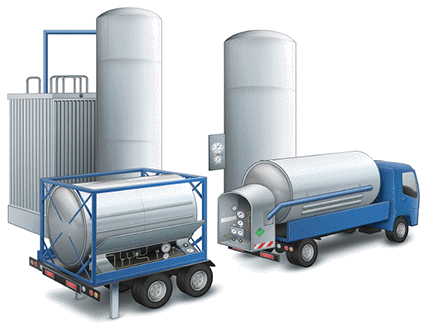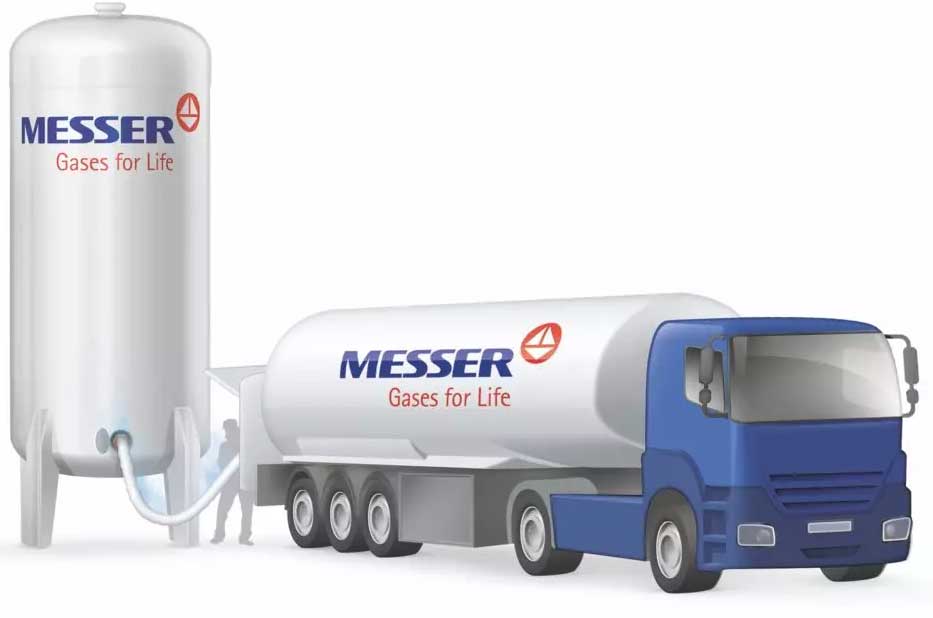 |
Avoid Boil-off Gas in Cryogenic Tanks |
The space-saving advantages of storing gas in liquid form was recognized as early as the 19th century, but a practical, commercially viable solution for storing liquid gases only came about around 1898. At that time, James Dewar succeeded in liquefying hydrogen, and his tanks became known as the "Dewars", which we still know today.
One of the problems recognized early on in the storage of of gases as liquids at cryogenic temperatures (typically -150°C) is evaporative gas (BOG). This occurs when heat from different source enters the tank, causing the liquid to boil and increasing the pressure in the tank.
What causes boil-off?
A number of conditions can cause boil-off gas in a cryogenic tank, including..
- Heat absorbed from ambient air
- Rapid variation of barometric pressure
- Heat produced by the operation of pumps
- Heat absorbed from ambient air by cooled storage tanks
- Vapor displacement by through a liquid inlet into the tank
For obvious reasons, cryogenic gases are stored in tanks at temperatures below their boiling point. This means that when heat enters a cryogenic tank during storage or transport, some of the product in the tank continuously evaporates and boils off.
If there is a large temperature difference between the media being stored and its environment, heat can enter through the floor, wall or roof of storage tanks. When boil-off occurs, it can lead to much product wastage, through conduction, convection and radiation.

Heat and pressure control
To minimize the risk of BOG, it is important to first understand that temperature and pressure are directly related. In the tanks, the product exists in an equilibrium between a thermodynamic liquid and vapor, depending on the given pressure and temperature. As the temperature in an industrial gas storage drum rises, so does the pressure. Heat and pressure control are the main concerns in the cryogenic industry. Here, the goal is to limit heat transfer to the cryogenic tank when it needs to be stored or transported. This prevents the liquid from boiling, turning into vapor and escaping from the tank.
What can be done to minimize boil-off gas?
BOG generation is directly affected by the cryogenic gas composition, aging and operational limitations of terminals. One of the most efficient ways to reduce the generation of BOG is further cooling during loading, but this consumes a significant amount of power and affects the value chain.
In addition to loading gas as cold as possible, there are operational considerations that can minimize evaporative gas production..
- Reduce the pressure in the tanks when loading
- Limit the amount of fluid movement in the cargo tanks by defined sea lanes or anticipate agitated passages (turbulent sea lanes) and reduce tank pressure where possible
- Adjust the fuel gas system to prevent recirculation of hot fuel gas
- Monitor Cofferdam temperature (empty space between compartments) and maintain temperature at required value
If, due to unforeseen situations, the pressure in the tank rises above the maximum operating limit, is considered a hazardous situation.
To prevent this danger, the tank has a pressure relief valve that allows venting to atmosphere a limited amount of gas.
Related Post(s)

Cryogenic tanks are used for the storage of natural gases such as oxygen, argon, nitrogen, helium, hydrogen and other materials...